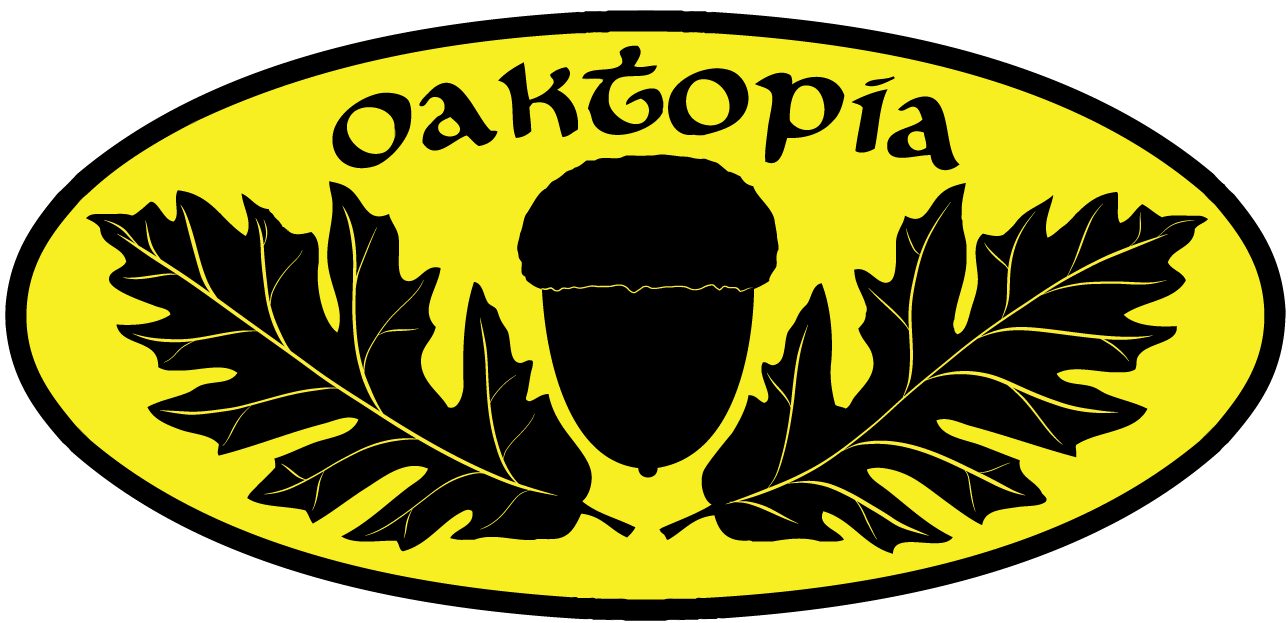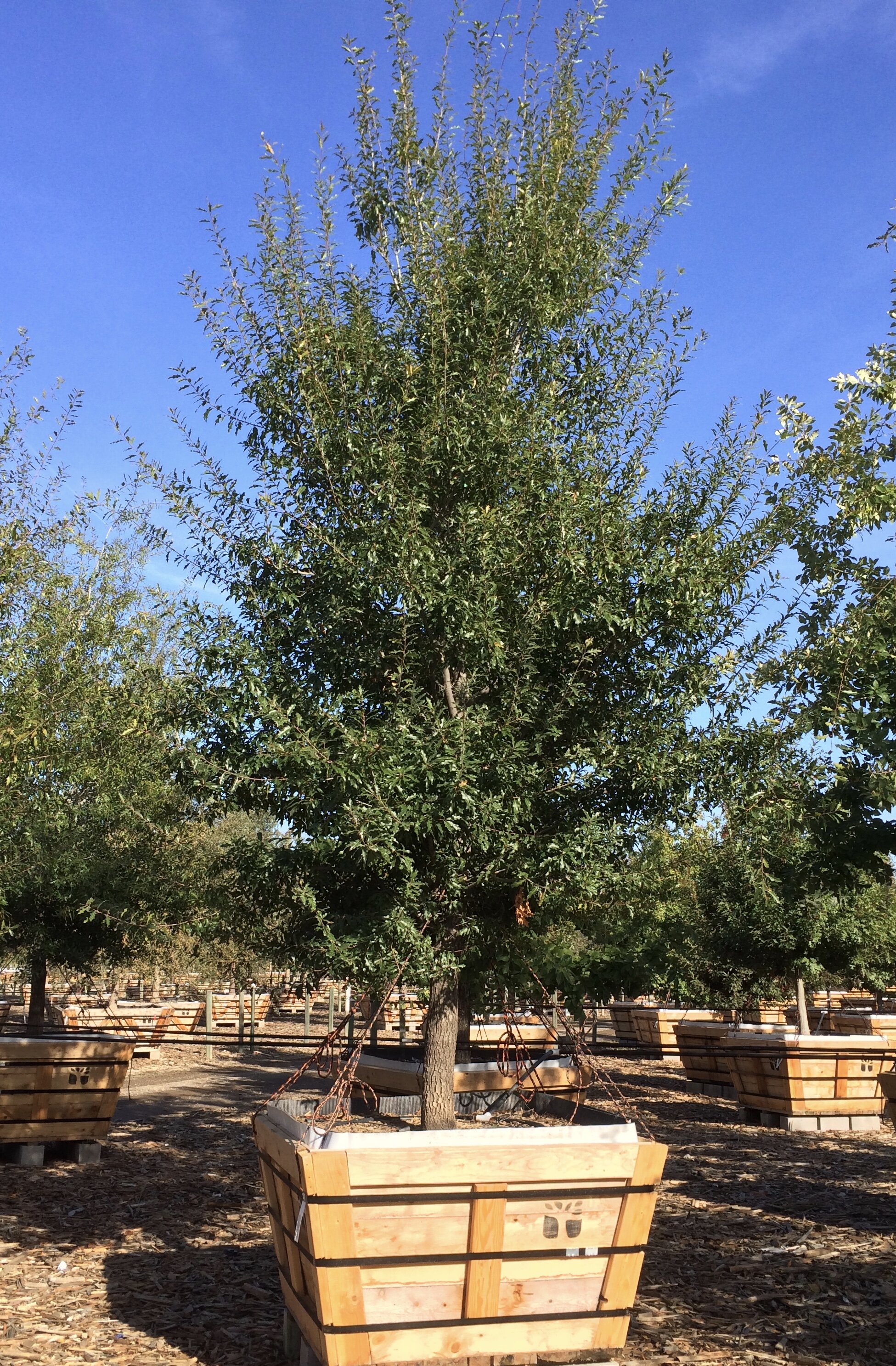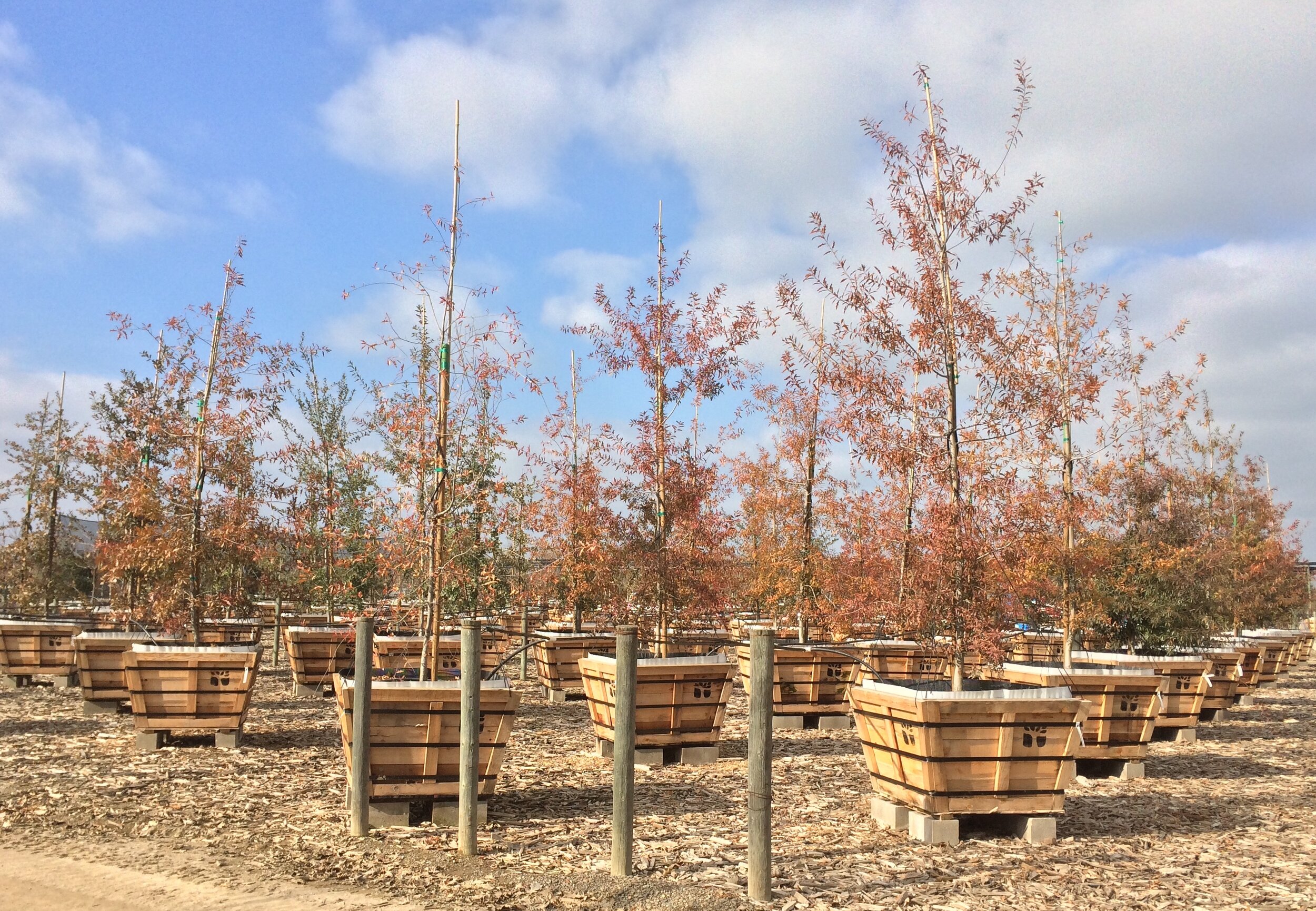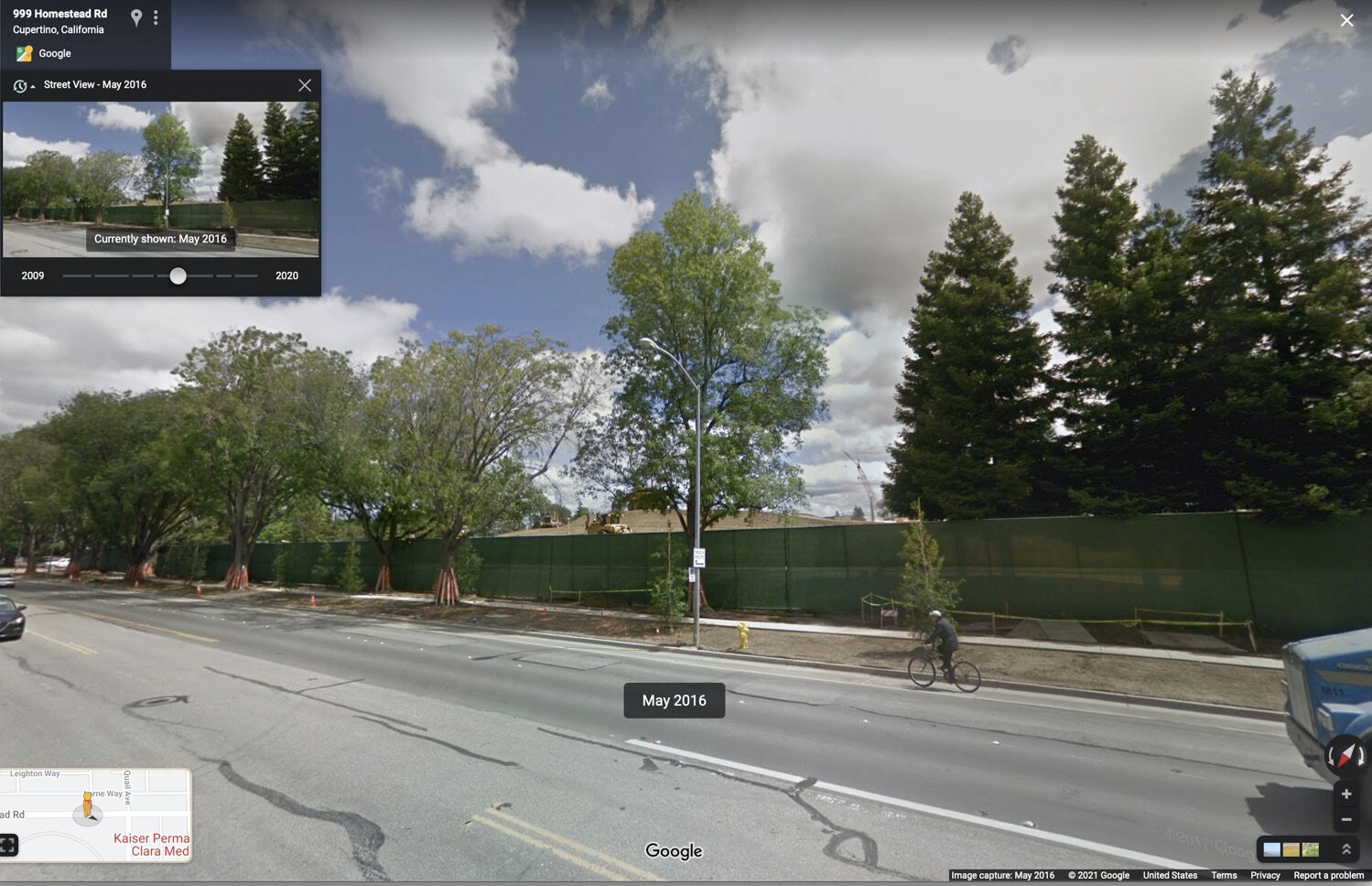Mexican Red Oak
Quercus canbyi
The Mexican Red Oak features winter foliar coloration (winter color rather than fall color for this semi-evergreen oak species), which can be quite spectacular, and a welcome addition to the California landscape. This oak is from northeastern Mexico, and the Mexican red oak has proven surprisingly well adapted in limited plantings. Mexican red oak is a medium size oak with a slender trunk and root flare, giving it meaningful urban street tree potential.
In fact, the Mexican red oak has been used successfully as an urban tree in Texas, where acorns were collected and brought to California in 2008. A Mexican red oak has been growing near Gerona Road at Stanford for more than a decade now, without irrigation except for the first three years. While the tree on this very dry site won't win any growth speed races, it is surviving, growing, and looking good in an area where even native oaks are experiencing substantial stress.
Two additional Mexican red oaks at Stanford are located near Palo Road and El Camino Real near the Palm Drive entrance arch. These trees, with limited irrigation, have grown well, and give excellent late fall color, around Christmas to Valentines day, depending on genetics and lowest minimum temperatures reached in that season.
There are nearly 100 Mexican red oaks along Homestead Road on the perimeter of Apple Park, along with a dozen or so Chisos red oaks (Quercus gravesii), a few Mexican sartor oaks (Quercus sartorii), and a couple oddball Mexican red oak/Texas red oak hybrids that have proven disease prone.
In this irrigated location, Mexican red oaks have performed exceptionally, despite being planted in the shade of large, old Shamel ashes (Fraxinus uhdei). The Mexican red oaks have proven surprisingly shade tolerant, but there is a secret to the wonderful success of these unusual Homestead plantings. The secret? Mexican and Shamel ash grow together in habitat in Mexico, just as you can see along Homestead! Mimicking proven natural patterns is often a winning landscape strategy.
At this point in the introduction of Mexican red oak to California, it can be recommended for general planting, but primarily for irrigated situated in favorable soil locations. Not recommended for truly tough, dry sites. Acorns are tiny, if any are produced, and the tree has shown a very low invasiveness potential. California nursery industry availability is increasing yearly.
From experience with the species thus far, there is a wide range of variation in growth habit, from upright and apical dominant, to moderately pendulous. Upright specimens should be identified and propagated. Mexican red oak is a tree with tremendous potential in California, but work is needed to isolate mother trees with an upright growth habit for further propagation.
Learn More:
-

Oaks of the World
A more scientific look into the Quercus canbyi…
-

iNaturalist
See and learn about the tree in the wild…
























